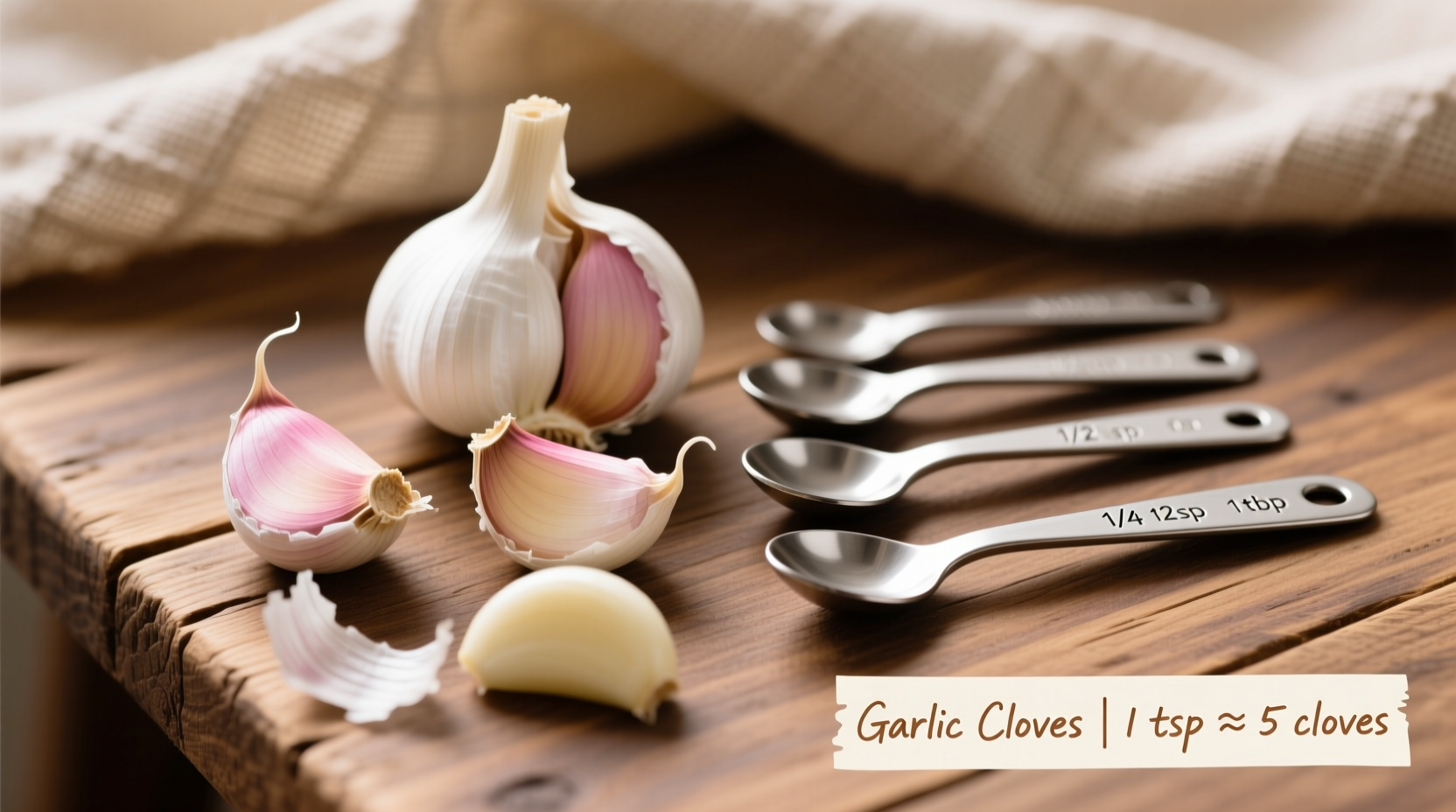When following recipes that specify garlic by clove count rather than measurements, understanding the exact yield becomes crucial for flavor balance. Professional chefs and home cooks alike need accurate conversions to maintain recipe integrity, especially when scaling dishes or adapting international recipes.
Understanding Garlic Measurements for Perfect Cooking Results
Garlic measurements can make or break your dish. Too little leaves flavors flat; too much overwhelms delicate ingredients. Knowing exactly how much four cloves provide ensures your sauces, marinades, and sautés achieve that perfect aromatic balance professional kitchens deliver consistently.
Standard Garlic Conversions Every Cook Should Know
Garlic size varies significantly between varieties and growing conditions. Standard supermarket garlic cloves typically fall into predictable measurement ranges that help translate "cloves" into precise cooking measurements.
| Garlic Form | 4 Cloves Equivalent | Weight Range |
|---|---|---|
| Whole cloves (peeled) | Approximately 1.5 tablespoons | 12-16 grams |
| Chopped garlic | 4 teaspoons | 10-14 grams |
| Minced garlic | 1½ teaspoons | 8-12 grams |
| Garlic paste | 1 teaspoon | 5-7 grams |
This conversion table reflects data from the USDA FoodData Central database and professional culinary standards used in restaurant kitchens. The weight variations account for differences between small, medium, and large garlic cloves commonly found in grocery stores.
Why Garlic Size Matters in Recipe Execution
Not all garlic is created equal. A single supermarket clove might weigh 3-4 grams, while heirloom varieties can reach 8-10 grams each. This dramatic difference explains why some recipes turn out perfectly while others become overpowering.
When a recipe calls for "4 cloves of garlic," consider these factors:
- Garlic variety - Softneck (common in supermarkets) vs. hardneck (seasonal, more flavorful)
- Clove size - Small cloves yield about 25% less than large ones
- Preparation method - Minced releases more flavor compounds than sliced
- Recipe type - Delicate sauces need precise measurements while robust stews tolerate more variation

Practical Applications in Everyday Cooking
Understanding how much is 4 cloves of garlic transforms your cooking in tangible ways:
When Scaling Recipes Up or Down
Professional chefs rarely cook with "cloves" - they measure by weight for consistency. Converting 4 cloves to 12-16 grams allows precise scaling whether making a single serving or catering for 50 people. This approach prevents the common mistake of adding too much garlic when doubling recipes.
Substituting Prepared Garlic Products
When fresh garlic isn't available, these substitutions maintain flavor integrity:
- 1½ teaspoons minced garlic = 1 teaspoon garlic paste
- 4 teaspoons chopped garlic = ¼ teaspoon garlic powder
- 12-16 grams fresh = 1 tablespoon garlic-infused oil (for milder flavor)
Avoiding Common Garlic Measurement Mistakes
Cooks often misjudge garlic quantities because:
- They don't account for size variations between garlic heads
- They use volume measurements for minced garlic without packing consistency
- They don't adjust for garlic age (older garlic develops stronger flavor compounds)
For critical recipes, weighing your garlic provides the most reliable results. A $10 kitchen scale pays for itself in perfectly seasoned dishes.
When to Adjust Standard Garlic Measurements
While 4 cloves typically equal 1½ teaspoons minced, certain cooking scenarios require adjustments:
| Cooking Context | Recommended Adjustment | Reason |
|---|---|---|
| Raw applications (salads, dressings) | Reduce by 25% | Raw garlic intensity increases as it sits |
| Long-simmered sauces/stews | Increase by 20% | Flavor compounds dissipate during extended cooking |
| High-heat searing | Maintain standard measurement | Quick cooking preserves volatile compounds |
| Delicate seafood dishes | Reduce by 30-50% | Garlic can overwhelm subtle seafood flavors |
These context-specific adjustments come from Culinary Institute of America research on flavor compound behavior during various cooking processes. Understanding these nuances separates adequate cooking from truly professional results.
Garlic Measurement Myths Debunked
Several persistent myths confuse home cooks about garlic quantities:
- "One clove equals one teaspoon" - This oversimplification fails to account for size variations and preparation method
- "Jarred minced garlic equals fresh" - Preservatives alter flavor compounds, requiring different measurements
- "All garlic varieties taste identical" - Rocambole garlic delivers more complex flavor than standard supermarket varieties
For authentic results in international cuisines, adjust measurements based on regional garlic traditions. Mediterranean cooking often uses more garlic than East Asian cuisines, where garlic complements rather than dominates.
Practical Tips for Consistent Garlic Results
Implement these professional techniques for reliable garlic measurements every time:
- Standardize your prep method - Whether chopping, mincing, or pressing, maintain consistent technique
- Measure after preparation - Volume changes significantly based on cut size
- Consider timing - Let minced garlic rest 10 minutes before cooking to develop full flavor
- Store properly - Garlic kept at room temperature maintains more consistent flavor than refrigerated
- Adjust for freshness - Younger garlic (spring harvest) requires slightly more than mature bulbs
Mastering how much is 4 cloves of garlic transforms your cooking from hit-or-miss to consistently excellent. These precise measurements form the foundation of professional flavor development that elevates everyday meals.











 浙公网安备
33010002000092号
浙公网安备
33010002000092号 浙B2-20120091-4
浙B2-20120091-4